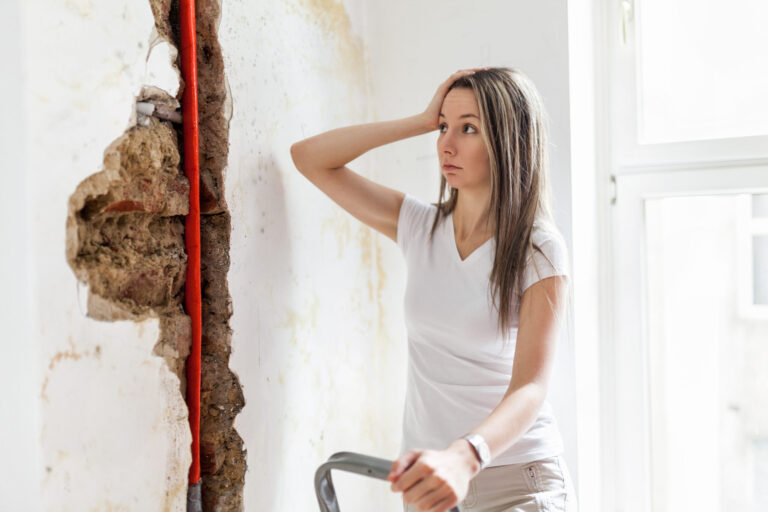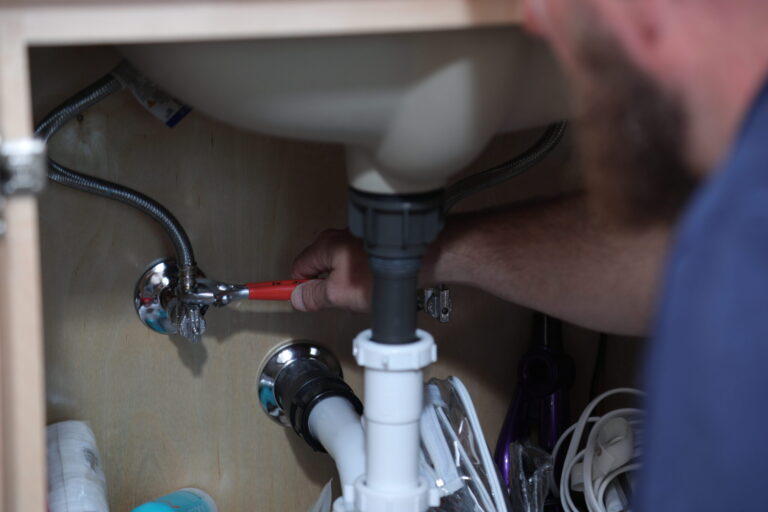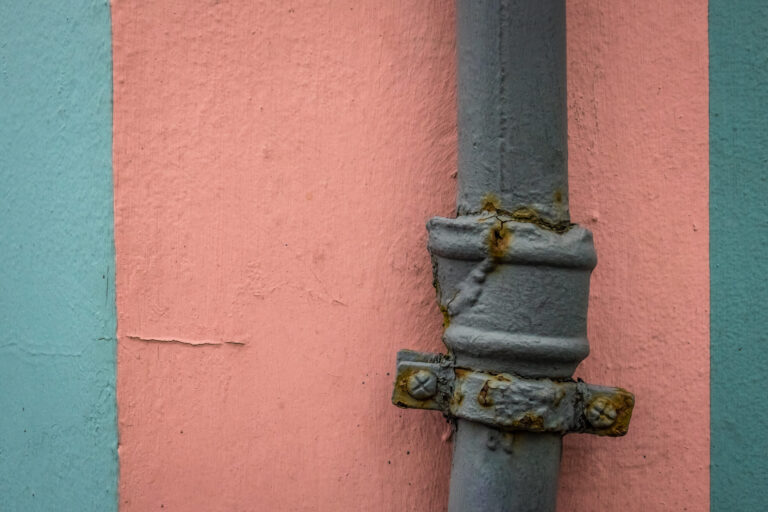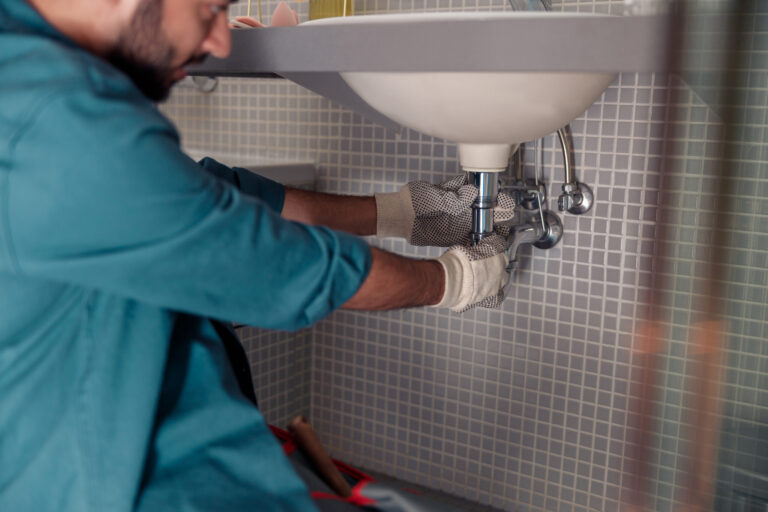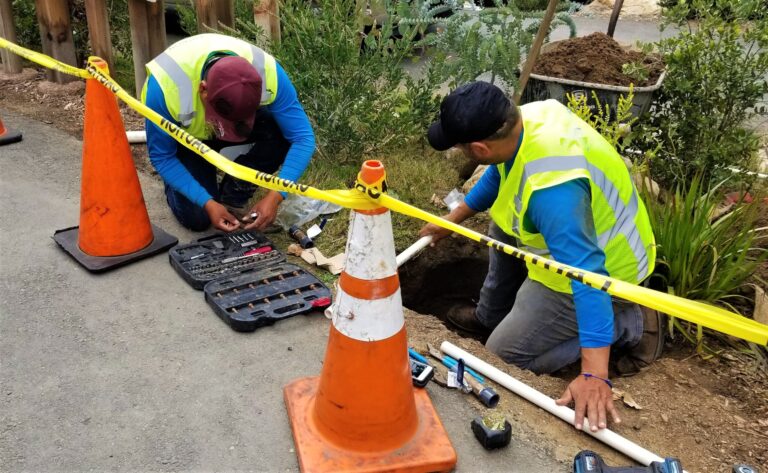Why Your Home’s Plumbing Matters
Your plumbing system is the backbone of your home’s functionality, and when the spine is broken, other pieces of your home will get paralyzed. Over time, even the best plumbing systems can deteriorate. Understanding when to replace your plumbing system can save you time, money, and stress.
Key Signs It’s Time to Replace Your Plumbing
Discolored Water
If you notice reddish or brownish water when you turn on your taps, this could indicate corroded pipes. Rust and sediment buildup can contaminate your drinking water, signaling the need for pipe replacement.
Frequent Leaks or Repairs
Are you constantly dealing with plumbing issues, like leaky pipes or slow-draining fixtures? Frequently needing repairs may be one sign that your plumbing is on its last leg.
Reduced Water Pressure
Low water pressure can result from blockages, mineral buildup, or aging pipes. If cleaning your faucet aerators or showerheads doesn’t resolve the problem, it’s time to call a plumber—these are clear signs of pipe material deterioration.
Noisy Pipes
If your pipes bang, rattle, or make other unusual noises, this could point to loose fittings or more severe plumbing system issues. Persistent noises may mean it’s time to replace sections or even the entirety of your plumbing system.
Visible Damage
Cracks, corrosion, or other visible signs of wear on pipes indicate aging plumbing. Left unaddressed, this can lead to water damage, structural harm, and rising water bills due to leaks.
Understanding the Lifespan of Plumbing Materials
How Long Do Different Types of Pipes Last?
Different pipe materials have varying lifespans:
| Pipe Material | Life Expectancy |
| Copper | 50–70 years |
| PVC | 25–40 years |
| Galvanized Steel | 20–50 years |
| PEX | 40–50 years |
Older homes may still have outdated materials, such as lead pipes or galvanized steel, which not only wear out faster but also pose health risks.
How to Identify Your Plumbing’s Age
Look at your home’s blueprints or call a plumber to find out the type and age of your plumbing. For homes over 50 years old, upgrading your plumbing system is often necessary to maintain safety and efficiency.
Risks of Ignoring Plumbing Problems
Structural Damage
Unchecked leaks or burst pipes can lead to extensive water damage in your walls, ceilings, and foundation. This kind of damage usually costs much more than proactively repairing or replacing the system when you see a need.
Health Concerns
Discolored water, mold growth, and bacteria buildup in aging pipes can pose serious health risks. Making sure that you and your family have safe, clean drinking water is unquestionably a priority, and the state of the pipes it flows through is a huge part of that.
Higher Costs Over Time
Ignoring plumbing issues increases maintenance costs. Plus, it can let leaks go undetected and raise your water bills. Though it might be more expensive upfront, addressing these issues early is more cost-effective than constant patchwork repairs.
When to Repipe Your House
Weighing the Costs and Benefits
While replacing your home’s plumbing system might seem daunting, it’s often the best long-term investment. Modern materials like PEX or PVC offer durability, flexibility, and resistance to corrosion. This can reduce the likelihood of future repairs and lower your monthly water bills.
Renovation Opportunities
Consider replacing your plumbing during larger renovation projects, such as remodeling a bathroom or kitchen. Combining projects can save time and money while adding value to your home.
Proactive Plumbing Maintenance
Regular Inspections
Schedule professional inspections every 2–3 years to detect potential problems early. This is especially important for homes in regions like Western Washington, where moisture can accelerate corroded pipes and other issues.
DIY Maintenance Tips
While professional help is crucial for major plumbing issues, you can take steps to maintain your system:
- Avoid chemical drain cleaners that can erode pipes.
- Insulate pipes in colder months to prevent freezing.
- Keep an eye out for early warning signs like slow draining or discolored water.
Choosing the Right Plumbing Professional
When hiring a plumber for pipe replacement, look for someone licensed and insured to ensure qualified, safe work and protection against liability. Choose a professional experienced in repiping homes, as they’ll know how to handle the project efficiently and ensure durability. Familiarity with local issues, like those common in Western Washington, is vital for tailored solutions. A trustworthy plumber will communicate clearly, provide transparent estimates, and offer financing options to make upgrades more accessible. Selecting the right professional ensures high-quality work and peace of mind.
Final Thoughts
Your plumbing system plays a vital role in the comfort, safety, and efficiency of your home. Ignoring signs of aging pipes—such as discolored water, leaks, or reduced water pressure—can lead to more significant problems and higher costs over time. Replacing your plumbing system might seem like a big step, but it’s an investment in your home’s long-term health, value, and safety.
If you’re unsure whether it’s time to replace your home’s plumbing, don’t wait for a costly emergency. Taking proactive steps can save you money and stress in the long run.
Why Choose Black Lake Plumbing?
Here at Black Lake Plumbing, we care about cultivating our community. More than just another plumbing contractor, our team is made up of your own neighbors; we understand the unique ins and outs of operating in the pacific northwest. With years of experience and professional training As a locally owned and operated company with deep community roots in Western Washington, we’re committed to providing reliable, honest service with journeyman-quality craftsmanship.
